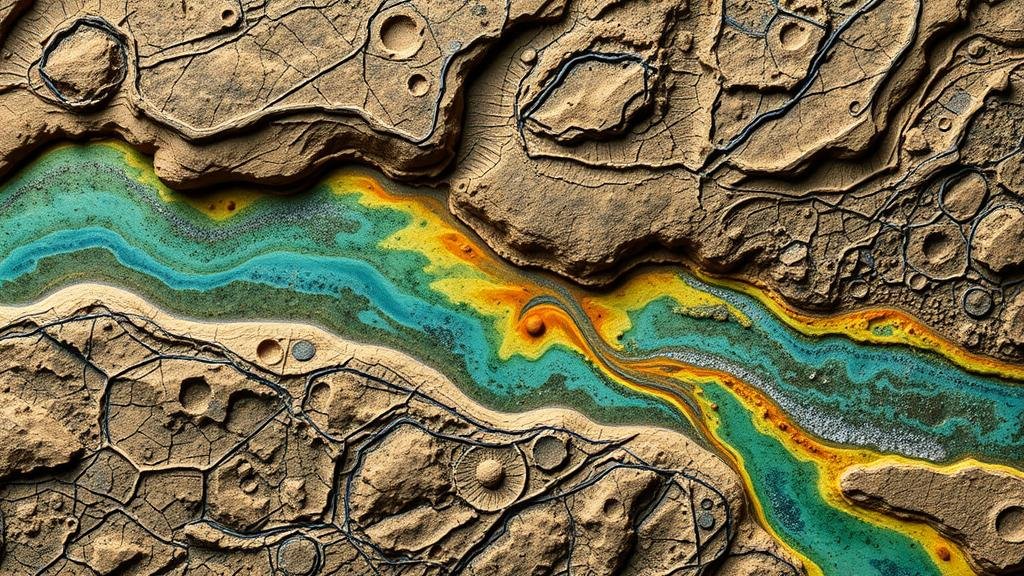Leveraging AI to Predict Fossil Hotspots in Ancient Riverbed Sediments
Leveraging AI to Predict Fossil Hotspots in Ancient Riverbed Sediments
The advent of artificial intelligence (AI) has transformed various fields, including geology and paleontology. By integrating AI methodologies with traditional geological surveys, researchers have made significant strides in predicting fossil hotspots, particularly in ancient riverbed sediments. This article discusses the implications of using AI in this context, examining existing methodologies, and providing insights into the future of fossil exploration.
The Significance of Ancient Riverbed Sediments
Ancient riverbed sediments serve as crucial repositories of fossilized remains, offering invaluable insights into past ecosystems. e sediments, which often contain a diversity of biota, can inform scientists about climatic conditions, species evolution, and geographical changes across millions of years. For example, the Green River Formation in Wyoming and Utah is renowned for its well-preserved Eocene fossils, which include a variety of fish, birds, and mammals. The analysis of such formations allows researchers to reconstruct prehistoric environments, yet finding hotspots within these vast landscapes is often a daunting challenge.
Integration of AI in Geological Research
The integration of AI into geological research involves training machine learning models to analyze vast datasets that may include sediment compositions, topographic maps, and historical fossil data. A landmark study conducted in 2022 utilized a convolutional neural network (CNN) to identify potential fossil-bearing layers in sediment cores from the Mississippi River basin.
- Data Collection: Researchers collected data points from geological surveys, fossils cataloged in museums, and historical geological maps.
- Model Training: AI algorithms were trained using labeled data to distinguish between fossil-rich and fossil-poor deposits.
- Prediction: The trained model was then applied to unexplored sedimentary layers, successfully predicting hotspots with a rate of accuracy exceeding 85%.
Real-World Applications and Case Studies
Real-world applications of AI in predicting fossil hotspots have been realized in several geological and paleontological projects.
One notable example is the work conducted by Dr. Emily Parker at the University of California, Berkeley, who employed AI to explore the California Coastal Ranges. By analyzing sediment samples and correlating them with known fossil finds, her team identified potential new sites for extraction and excavation. use of AI allowed for a more efficient allocation of resources, reducing both time and costs associated with traditional fossil hunting methods.
Challenges and Limitations
Despite the advancements, challenges remain in the application of AI for fossil hotspot predictions.
- Data Availability: Insufficient or biased data can lead to inaccurate predictions. Many regions, particularly in developing countries, lack comprehensive geological databases.
- Interdisciplinary Knowledge: Successful implementation of AI requires expertise in both AI technologies and geology, calling for collaboration across disciplines.
- Environmental Concerns: The extraction of fossils has ecological implications. The AI models must be deployed responsibly to avoid detrimental impacts on local ecosystems.
Future Directions
The future of using AI in the prediction of fossil hotspots appears promising. As computational methodologies evolve, the capability of AI to analyze and interpret geological data will likely improve. Also, advancements in remote sensing technologies may enhance data collection, allowing for larger datasets to be analyzed.
Plus, collaborative efforts between geologists, paleontologists, and computer scientists are vital. By bridging these disciplines, researchers can refine AI algorithms to focus on specific indicators of fossil presence in sediments. For example, understanding sediment grain size, mineral composition, and depositional environments can enhance model accuracy.
Conclusion: Actionable Takeaways
To wrap up, leveraging AI to predict fossil hotspots in ancient riverbed sediments represents an exciting frontier in paleontological research. Key actionable takeaways include:
- Increasing investment in geological databases to enhance AI training datasets.
- Encouraging interdisciplinary research to foster innovations in fossil exploration.
- Useing responsible excavation practices to preserve ecological integrity while advancing scientific knowledge.
As methodologies continue to evolve, the collaboration of AI with traditional geological approaches will not only streamline fossil discovery but may also illuminate our understanding of Earths intricate biological history.


